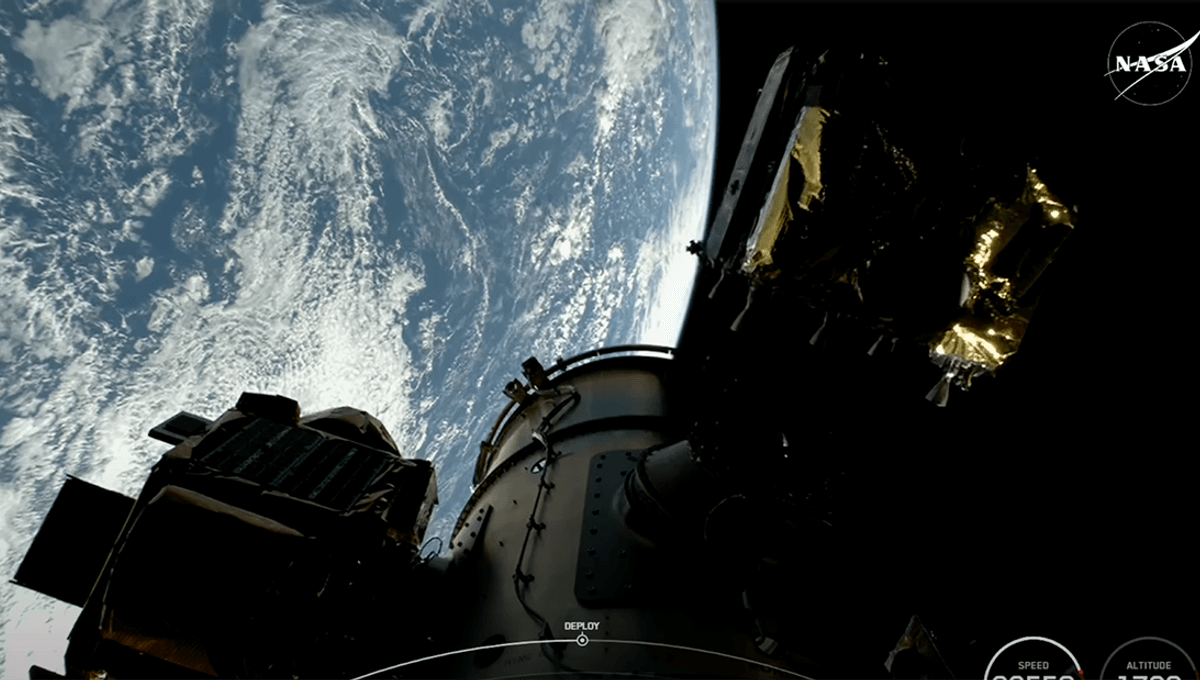
A private mission on its way to deep space has encountered “massive issues” shortly after departing the Earth.
ADVERTISEMENT
On February 26, space firm AstroForge launched its new spacecraft, Odin, into space on board SpaceX’s Falcon 9 rocket. The plan for the spacecraft was ambitious: to send it further than any private craft has ever flown, performing a flyby past the Moon to reach Asteroid 2022 OB5.
“Odin’s role is to gather critical imagery of the target asteroid, preparing the way for our next mission, Vestri, which will aim to land on the asteroid and begin extraction,” the team behind the mission explains on the AstroForge website.
In the long term, the team hopes to begin mining asteroids for platinum group metals, which are abundant in many of the space rocks.
The initial launch of Odin appeared to be going well, with the spacecraft successfully separating from the Falcon 9, and Odin powering up shortly afterwards.
This success, unfortunately, was short-lived.
ADVERTISEMENT
“As soon as the pass started, we ran into some massive issues,” AstroForge explained in an update. “The wrong polarization was on the antenna, and we still have no idea why. We had already done a live on-site test, and the configuration file was correct. Yet, the polarization is wrong. This was wrong for about the first 4 hours of the mission. This error meant that both uplink and downlink for the first 4 hours of the mission did not work. No commands were getting through, and also, no data was getting down.”
The team was unsure if the power amplifier was on, and without it they were unable to get any telemetry data from the spacecraft. While they made efforts to turn on the amplifier, sending instructions from the Earth below, ultimately they still did not receive a signal.
AstroForge received a little in the way of hope after AmSat, an amateur satellite network, picked up a 13-second communication matching their signal without even trying to look for Odin. By the time that they could look at the data, which confirmed that the spacecraft was booted up and the power amplifier was on, the satellite had already begun the next pass.
“But we did know Odin was alive,” AstroForge continued. “This was also a huge clue; the batteries onboard the spacecraft can only support the spacecraft for about 2.5 hours. So if we got a signal about 7 hours into the mission, it means that the spacecraft must have received power from the sun and started to charge.”
After further analysis, the team believed that the cause of the problem was that Odin had begun to tumble. Looking at low-resolution photos of the separation captured by Intuitive Machines’ Athena spacecraft, they were able to confirm that the spacecraft was tumbling ever so slowly through space, though not fast enough to account for the lack of communication with Earth.
“We then discovered a major issue. When you send a radio signal to a spacecraft, you first send what is called a carrier, and then you modulate data on top of it. The carrier is a set frequency and is generated at the dish. When we attempted to look at our first pass we had an issue, a large carrier signal was sitting right in the middle of our receive dish. What this was was our uplink showing up on the downlink. Not the spacecraft,” the team explained.
“Even worse, because this is so powerful, we are trying to reach a spacecraft which at this point is 300,000 km [186,411 miles] away, it would block us from getting any actual signal from the spacecraft. Think of it like trying to hear a whisper in a room where someone is blasting music at full volume—it drowns everything else out.”
ADVERTISEMENT
Unfortunately, the team has been unable to re-establish contact with the spacecraft as it continues to fly away from Earth. Nevertheless, they continue their efforts, and say that they have learned a lot from the mission, even if this is the end of it.
“At this point, Odin is still out there, and we are still trying to talk. Our current theory is that Odin is in a very slow rotation, and that we will become power positive again at a regular rate,” the team concluded. “While we can’t guarantee success, one thing is certain: we will keep learning, iterating, and taking shots on goal—because space is unforgiving, and you only get better by doing.”
Source Link: "We Ran Into Some Massive Issues": Private Spacecraft Lost 300,000 Kilometers From Earth